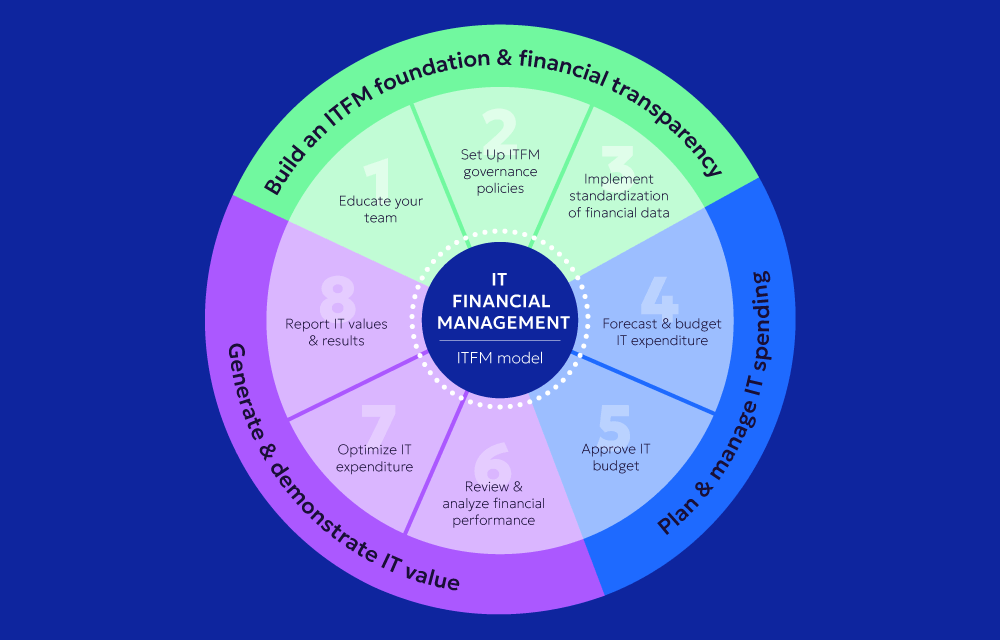What is IT Financial Management??
IT Financial Management (ITFM) is a strategic discipline that encompasses the planning, allocation, tracking, and optimization of IT spending across an organization. This involves establishing robust processes, policies, and controls to manage IT costs, investments, and budgets effectively. The primary goal of ITFM is to ensure that IT resources are utilized efficiently, costs are controlled and optimized, and IT investments are strategically aligned with business priorities.
Purpose of IT Financial Management
- Ensure Transparency: Promote visibility and accountability in IT spending. Promote visibility and accountability in IT spending. For further reading on enhancing transparency in IT financial management, visit the CIO Insight on IT Transparency.
- Optimize Costs: Manage and reduce IT expenses to maximize value from investments.
- Align IT and Business Goals: Ensure IT spending supports overall business objectives and growth.
- Facilitate Informed Decisions: Empower decision-makers with accurate information on IT investments and resource allocation.
Challenges
- Implementing ITFM involves navigating several complex challenges:
- Complexity: Managing finances in dynamic, large-scale IT environments can be intricate due to varied IT portfolios and decentralized spending.
- Visibility: Achieving full visibility into IT spending across different departments and projects is often challenging but critical for effective management.
- Alignment: Ensuring IT expenditures align with business goals necessitates ongoing collaboration between IT and business units.
- Governance: Adhering to financial regulations and internal policies requires stringent governance mechanisms. To understand governance challenges and strategies, consult the ISACA Guide on IT Governance.
ITFM framework
- Budgeting and Planning: Developing IT budgets that reflect business needs and strategic goals, and planning resource allocation accordingly.
- Cost Allocation: Distributing IT costs to business units or projects based on usage or consumption to enhance accountability and transparency.
- Financial Analysis: Performing evaluations to assess the efficiency and effectiveness of IT expenditures.
- Chargeback and Showback: Using chargeback or showback systems to detail IT spending for business units, fostering a culture of cost awareness.
- Cost Optimization: Identifying and implementing strategies to reduce costs and waste, thereby maximizing the value from IT spending.
By integrating IT Financial Management principles, organizations can enhance the management of IT spending, align IT investments with business strategies, and ensure the competitiveness and success of their business operations.



